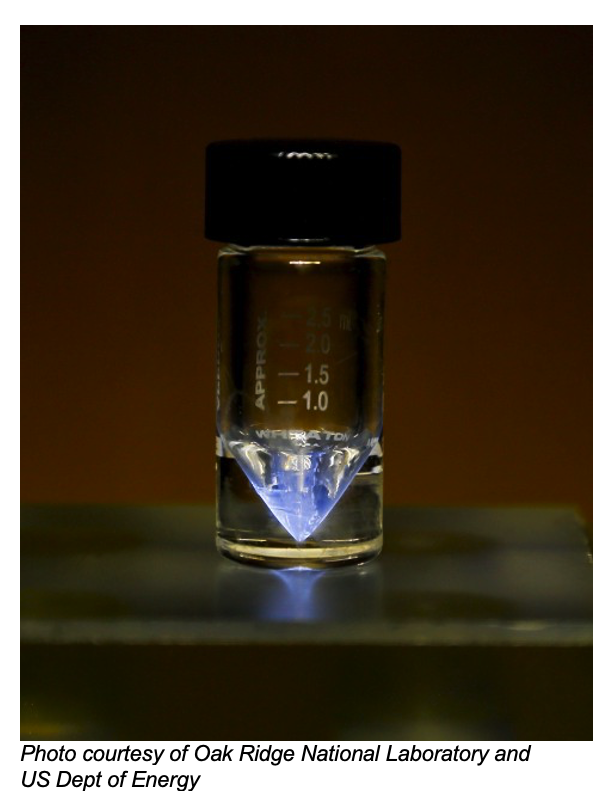National Laboratories Focused on Increasing Ac-225 Supply
 As part of the Department of Energy Isotope R&D and Production Program’s Tri‐Lab Research Effort to Provide Accelerator‐Produced Actinium-225 (Ac-225) for Radioimmunotherapy, Los Alamos, Oak Ridge and Brookhaven national laboratories are playing a crucial role in producing Ac-225, a potentially life-saving radioisotope.
As part of the Department of Energy Isotope R&D and Production Program’s Tri‐Lab Research Effort to Provide Accelerator‐Produced Actinium-225 (Ac-225) for Radioimmunotherapy, Los Alamos, Oak Ridge and Brookhaven national laboratories are playing a crucial role in producing Ac-225, a potentially life-saving radioisotope.
Tested in worldwide clinical trials against advanced metastatic prostate cancer, the radioisotope has proven effective in eliminating cancers. Ac-225 is produced in nature, but getting a significant amount of purified material demands an accelerator or nuclear reactor and the facilities and expertise to chemically separate out the Ac-225 from the potentially hundreds of isotopes created during production.
According to Kirk Rector, program manager for the Isotope Program at Los Alamos National Laboratory, Ac-225 could be thought of as a “Goldilocks” of isotopes — it is “just right” for fighting some tough cancers. Produced when a hockey puck-sized sample of thorium is bombarded with a proton beam traveling nearly half the speed of light, Ac-225’s half-life of just 10 days is ideal for production and international-level distribution. Produced in places such as the Isotope Production Facility at the Los Alamos Neutron Science Center, Ac-225 emerges not too “hot” (not so radioactive that it loses its radioactivity before it can be used), and not too “cold” (not radioactive for so long that it poses a significant health or waste challenge).
Ac-225 emits alpha particles, the bowling balls of the atomic world: destructive, but unable to go very far. Alpha particles are big enough to destroy the DNA in cancer cells, killing them for good. The alpha particles are also slow enough that they only travel the length of several cells, limiting the damage to other nearby tissues. After its 10-day half-life, Ac-225 decays into several other radioisotopes before becoming inert.
How the radioisotope is targeted at the cancer is another marvel and owes a great deal to the collaboration between nuclear and medical research teams in the Department of Energy Isotope Program. Some cancers, including prostate cancer, leukemia, colorectal cancer, melanoma and others, produce a specific antigen, a molecular structure that attracts a specific, matching antibody, a blood protein that is a natural part of the body’s immune response.
An exacting and newly refined process can bond Ac-225 to a cancer-antigen-matching antibody, or peptide, a short chain of amino acids. When this radiological medicine is injected into the body, the combination searches out the antigen and its cancer. The “bowling ball” alpha particles of the Ac-225 then go to work on the cancer.
This treatment is like a very sophisticated chemotherapy, which unfortunately can inflict its damage on not just the cancer but on any fast-growing cells, such as in the hair, skin and intestines. Avoiding that collateral damage is promising. In a recent mini-trial of prostate cancer patients, Ac-225 offered confidence-inspiring results in treating even metastasized and late-stage cancers.